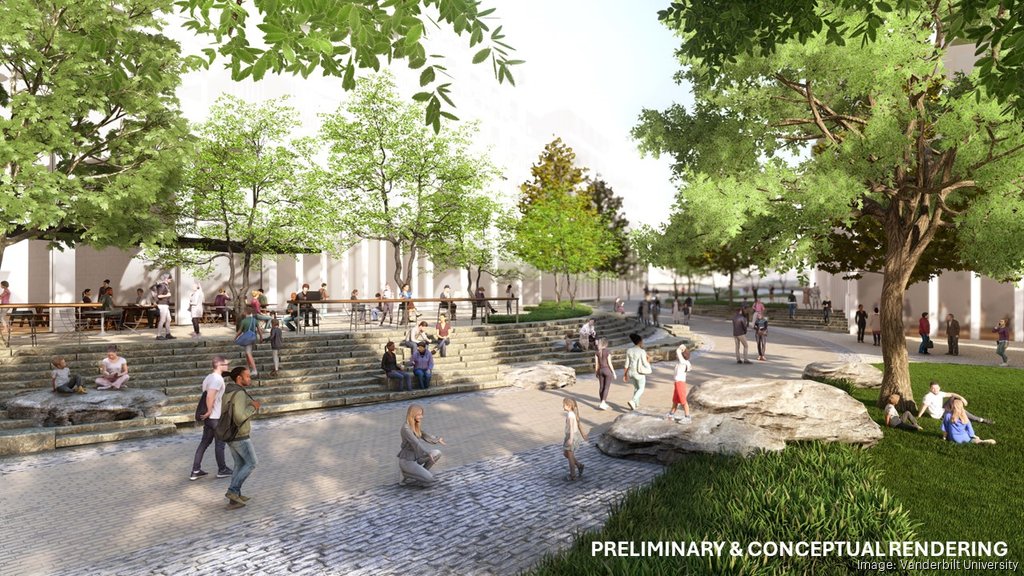Vanderbilt University is filing a Specific Plan application with the Nashville Planning Department this week to reshape 40 underutilized acres on the campus's western edge into a mixed-use, pedestrian-first hub for research, collaboration and entrepreneurship.
The goals of this long-term initiative are to more quickly translate university research into real-world solutions, strengthen cross-sector partnerships and expand opportunities for students, alumni and faculty by putting Nashville and Tennessee at the forefront of the innovation economy of the future.
 The big picture: Vanderbilt's plan, developed through extensive consultation with neighbors and community stakeholders, prioritizes walkability, safety, connectivity, public spaces and thoughtful traffic management in alignment with university and community values.
The big picture: Vanderbilt's plan, developed through extensive consultation with neighbors and community stakeholders, prioritizes walkability, safety, connectivity, public spaces and thoughtful traffic management in alignment with university and community values.
Zoom in: The SP establishes a framework for development of the neighborhood. It lays out a plan for streets and pedestrian networks, green space and general building height and density, as well as for ground-level amenities and public spaces. The framework, which is adaptable to market conditions, community needs and the surrounding site context, kicks off the next phase of engagement with stakeholders and partners.
After submission, the Nashville Planning Department will consider the proposal and provide opportunities for members of the community to offer feedback. Over several months, Vanderbilt, the community and the planning department will work together to determine next steps and what will be the final framework for the neighborhood's development.
What's inside the vision: Vanderbilt has drawn up plans for a vibrant, mixed-use neighborhood that connects the campus to the city. Office and lab space will be next to retail, restaurants and new housing, all stitched together with green space. Height and density will be rebalanced to prioritize public space and walkability by shifting taller buildings away from residential edges and toward the West End corridor. Planned mobility upgrades include an enhanced street network that helps pedestrians, bicyclists and cars move more safely and efficiently, dedicated walking and biking paths, safer crossings and capacity for future traffic.
The plan features roughly three acres of publicly accessible open space, including a square and a winding "meander" that links the neighborhood and showcases native plantings, plus places for arts, culture and community life.
What to Expect Within the Future Neighborhood
- A welcoming link between campus and city that revitalizes underused land
- Spaces for faculty startups and increased connection to innovation partners
- Enhanced connectivity, safety and everyday livability
- New public spaces programmed for arts, culture and community events
- A mix of housing options
- An integrated parking strategy involving the buildings, streets, parks and housing to accommodate residents, workers and visitors
- Design that respects neighborhood context by placing taller buildings away from residential edges
- Economic activity that strengthens Nashville's innovation ecosystem
The innovation neighborhood is a long-term, phased project for Vanderbilt. Filing the SP establishes the framework, but implementation will roll out over time. Neighbors, key stakeholders and the Vanderbilt community will be kept in the loop as the first construction phase approaches.






